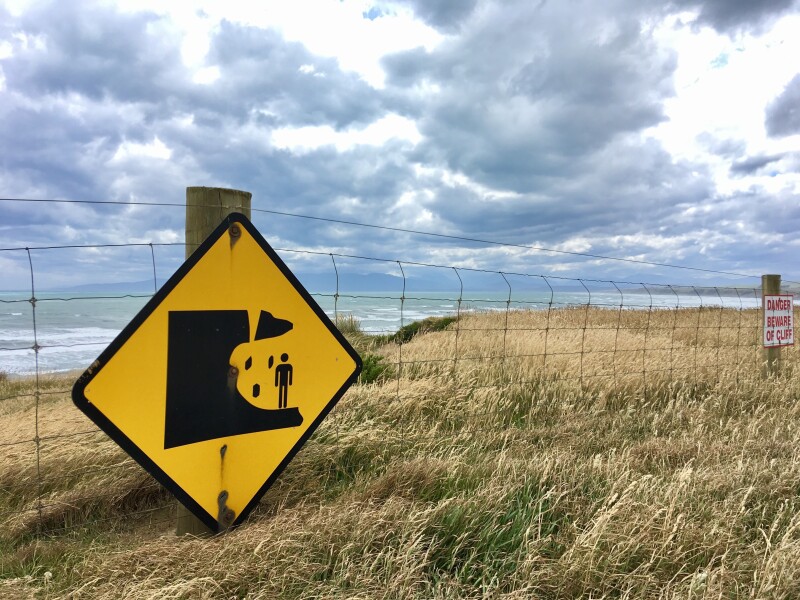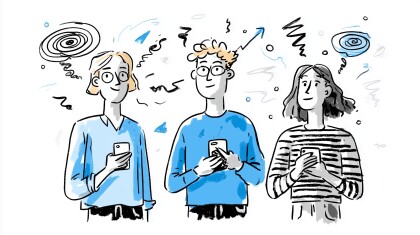I have put a few runs in on the digital legislation thing. Last year in February, the Service Innovation Lab facilitated a cross agency workshop called Better Rules, which Media Suite kindly donated my time to as a volunteer. Since then their work has been continuing and a number of hack-a-thons and papers have been released. The OECD Trends Report for 2017 has credited the work on digital legislation as a key innovation under the machine-readable-world trend.
At its core, digital legislation is about using a co-design team to develop rules. Technology may be part of the solution but it is not a requirement. This way of working is not about the automation of a person’s important role. It is about focusing on empowering everyone impacted by a rule. We do this by applying technology where it can automate the mundane and empower the understanding of rules. When you consider that the history of law goes back to 3000 bc, you can really understand how the process is ripe for improvement!
Early this year, Mitch and I had the opportunity to work with Peter and Mark from Palmerston North City Council. Our hypothesis is that the application of the principles from the Better Rules group could be applied to the bylaw development process. We decided to test the hypothesis by applying the principles from the Better Rules working group to the development of a bylaw. We hosted a full-day workshop at Media Suite.
To start the day, the team looked at the current process of creating a bylaw. I found this extremely insightful. The process of moving a bylaw from development to ratification can take a lot of time – up to 12 months in some cases. Despite the lengthy process, there are a number of feedback loops which support the continuous improvement of the rules.
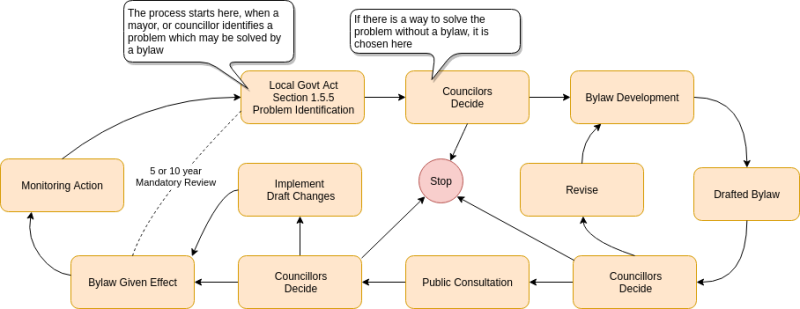
Continuous improvement of rules is very important! You can see why when considering some esoteric rules that exist. The UK has a great example. They have a rule which prohibits operating a cow when intoxicated. If the pace of rule change increases, we can continuously improve these rules so that they are more clear why they exist, or abolished if not fit for purpose. I learned that in New Zealand, the Local Government Act was updated in 2002, and as a result we have the legislative tools required to make sure continuous improvement of bylaw will happen.
Next, we decided that it would be useful to apply our skills to the breakdown of an existing bylaw in Palmerston North. Section 6 of the signs and usage of public spaces bylaw was our target. We applied the technique of domain modelling and question modelling to build up some valuable knowledge assets.
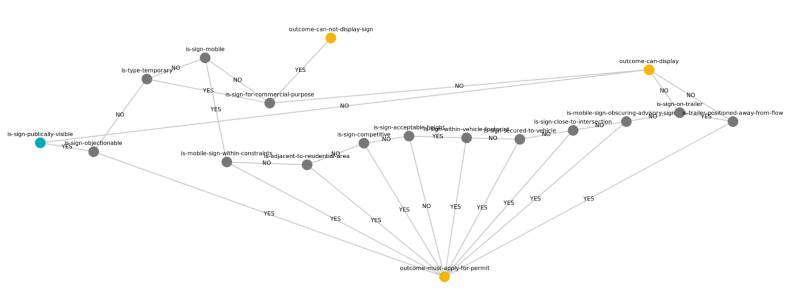
Note: A quick aside on domain & question modelling. Domain modelling is basically the way a software developer will represent what nouns (entities) and data fields relate to those nouns, this allows the creation of a database that will enable collection of data that can be surfaced to an intelligent agent (artificial or a domain expert). Question modelling is the process of determining what questions would need to be asked in order to reach a specific outcome. The result of this is a decision tree which people can use to understand the rules.
Domain & Question modelling empowers the creation of software, and independently adds value to all stakeholders who are collaborating on a rule. A key insight of the Better Rules group is about creating living documentation which improves the understanding of how and why a rule works the way it does.
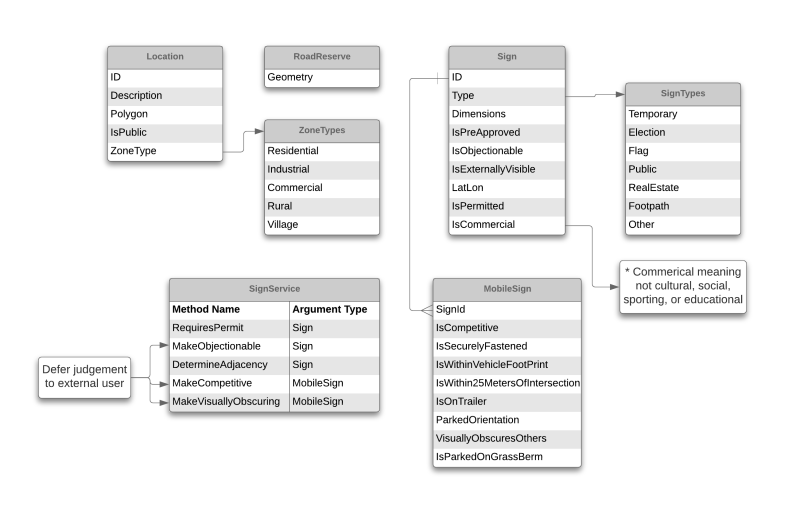
We surfaced a number of potential improvements to the draft while going through the process of creating domain & question models. These insights can be taken to the councillors when the bylaw next goes through a mandatory review. The domain & question model helped us find and articulate the potential improvements.
Another key insight on the question modelling is that certain provisions are very hard to represent using the first order logic. For example provision 6.2 is about excluding the display of signs that are ‘objectionable or indecent’. It was impossible to define what is ‘objectionable or indecent’ using first order logic because first order logic can only represent objective truth, and a more correct definition is subjective when it comes to ‘objectionable or indecent’. The team came up with two ways that this could be dealt with. First, a human intervention step, where a real person could look at the situation and determine an outcome. Second, a defeasibility logic could be applied, which would allow a system that determines the outcome, but allows new facts about the world to update it’s decision. Ongoing research is being done here.
On the day, we didn’t end up putting fingers on keyboards, but using the assets and the domain model I was able to hack a small thing together . Using the tool, we can visualise the question model, and how you would navigate around it. The code is open source and MIT, and you can check it out here. Bore you with the technical details I will not, but check out the README.md on Github for a deeper dive on what has been created.
Putting some time in on an interesting new domain is one of my favourite parts of the work I do at Media Suite. Throughout the day I learned a lot about how bylaw works in NZ, and it feels empowering to know how the bylaw situation has improved with time, thanks to the Local Government Act. There is so much more exciting work to be done with Local Government in this space. The area of research is wide, and will involve collaboration between different disciplines. New technologies will be required to support the domain. Most importantly, everyone needs to benefit from digital legislation, or we are not hitting the target on what this whole thing means.
For the interested, here are some choice links on Digital Legislation:
- The better rules working group report
- One of my own posts on the topic.
- The Better rules work is recognised on page 104 of this OECD report

